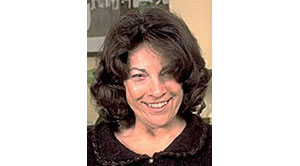I probably shouldn’t be telling this story.
It starts in 1968. According to (brilliant) researcher, surgeon and writer Atul Gawande, in that year, The Lancet published findings that represent one of the most important medical advances of the last century. It was just this: David R. Nalin and Richard A. Cash, American researchers in Dhaka during a cholera outbreak, added sugar to salt and water hydration and administered it orally to 29 patients. Cholera deaths: zero. Sugar, it seems, helps the gut absorb fluids.
Cholera pandemics killed millions in the nineteenth century. Even after intravenous fluids reduced mortality to 30 per cent in the early years of the twentieth century, globally, most people died, especially in places where medical supplies and personnel were in short supply.
Thanks to these new findings, however, if your child had cholera, you could learn to mix the solution in your own hut. But -- here’s the "slow" part -- almost a decade later, the simple solution was not being used. The idea, Gawande writes in a 2013 New Yorker article Slow Ideas, was stalled.
Then, in 1980, a Bangladeshi nonprofit organization launched a campaign considered completely impractical and inefficient: going door-to-door, workers talked to people, one by one. Eventually, 12 million families learned how to save their children.
The solution and the approach spread to other nations. But where "arm’s length", low-touch campaigns were implemented in place of the high-touch approach, nothing changed. The campaigns failed.
As Gawande puts it, "Simple 'awareness' isn’t going to solve anything." People talking to people is still how the world’s standards change.
As Gawande puts it, "Simple 'awareness' isn’t going to solve anything." People talking to people is still how the world’s standards change.
If you work in communications, you might take this as very bad news and think it’s in your best interests to keep it a secret. At least, you might if you are arrogant enough to think that communications, on its own, can change the world.
It can't. What it can do – particularly in media-savvy, media-rich countries like Canada – is create the environment that will allow people to change the world by talking to each other.
The tools of the communications practice can be used in two ways. First, to ensure people know what’s meant when we say Telehomecare or, indeed, telemedicine. Not just know what’s meant, but have a built-in sense -- built by us! -- that it’s a good thing. That’s the awareness and approval piece. Second, communications as a practice can help refine and articulate the messages and create the materials that support the conversation.
But when it comes down to getting people to actually turn understanding into action, the evidence says you can only get them to change what they do by helping them change the way they think about what they do.
But when it comes down to getting people to actually turn understanding into action, the evidence says you can only get them to change what they do by helping them change the way they think about what they do.
Gawande uses the example of the “discovery” of both anesthesia and antiseptics. The first public demonstration of anesthesia was in October, 1846. By June of the next year, it was being used in most regions of the world. But when the reduction of death in surgery thanks to antiseptics was reported in The Lancet by Joseph Lister, not much happened. Decades later, “Listerism” hadn’t caught on either in the delivery room or the operating room. And we know how that turned out.
Doctors finally began to follow antiseptic procedures, according to Gawande, when pioneering German surgeons taught their students to think like laboratory scientists not surgeons. And those students went forth and taught others.
If changing how people think seems overwhelming, whether you’re talking about 23,000 Ontario doctors and telemedicine or teaching families in 75,000 villages how to make the salt/water/sugar solution, I recommend to you the writing of Anne Lamott.
She’s not a healthcare professional or an educator. She’s a writer who writes about writing and life. She’s likely best known for this story.
“Thirty years ago my older brother, who was 10 years old at the time, was trying to get a report on birds written that he’d had three months to write. It was due the next day. We were out at our family cabin in Bolinas, and he was at the kitchen table close to tears, surrounded by the binder paper and pencils and unopened books on birds, immobilized by the hugeness of the task ahead. Then my father sat down beside him, put his arm around my brother’s shoulder, and said, Bird by bird, buddy. Just take it bird by bird.”
Like it or not, I think we and our partners have to be prepared to take the promulgation of telemedicine bird by bird … adding, perhaps, add a little sugar to improve absorption.






